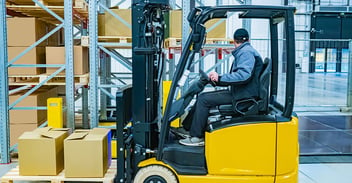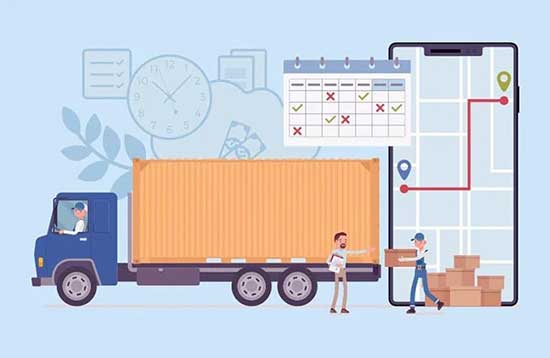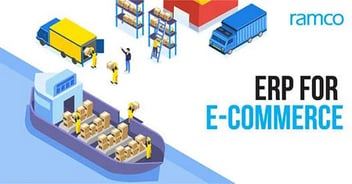

There’s a unique kind of stress that comes with managing transport and logistics. It’s the kind that has you waking up in a cold sweat, wondering if that last-minute shipment made it, or if a driver took an unexpected detour to the scenic route—also known as peak-hour city traffic.
Having spent years in this space, I’ve learned that the key to success isn’t just moving freight; it’s moving it efficiently, profitably, and with enough visibility to prevent a full-blown logistical panic attack. Enter the Transport Management System (TMS)—a tool that, when done right, doesn’t just support your organization’s goals but actively drives them forward.
The Chaos Without a TMS
Let me paint a picture. 5 years ago, I was managing a fleet and thought spreadsheets, phone calls, and gut instinct were all we needed. It was all going well—until it wasn’t. A missed pickup here, an incorrect delivery there, and before you know it, your margins are disappearing faster than your patience. I remember one particularly painful day when a crucial load of goods was sent to the wrong depot. Cue a very expensive and very embarrassing fix, plus a client who suddenly developed trust issues.
The Magic of a Proactive TMS
A TMS takes the uncertainty out of the equation. Instead of relying on frantic phone calls and crossed fingers, it gives you real-time tracking, automated scheduling, optimized routing, and cost control. But beyond the basics, a good TMS proactively works in your favor. Here’s how:
-
Aligning with Business Goals
Your organization’s goals likely include reducing costs, improving customer satisfaction, and scaling efficiently. A TMS directly contributes to these by optimizing fleet utilization, reducing unnecessary kilometers, and automating compliance. More importantly, it turns reactive firefighting into proactive planning—and that’s where the real savings and efficiencies come in.
-
Data-Driven Decisions (Not Just Gut Feel)
Remember that time I mentioned trusting my instincts? Yeah, that only gets you so far. A TMS provides real-time data and analytics that allow for smarter decision-making. Want to know why overtime costs are spiking? Or which routes are bleeding money? Your TMS tells you before you’re drowning in losses.
-
Customer Experience (Because No One Likes “Where’s My Stuff?” Calls)
Nothing tests customer patience like a delivery delay—except maybe giving them no visibility on where their goods are. With a TMS, customers get real-time tracking and status updates, meaning fewer angry calls and more trust in your service. And trust me, that makes everyone’s life easier.
-
Scalability Without the Growing Pains
A good TMS grows with you. Whether you’re managing 50 trucks or 5,000, it ensures your processes scale without chaos. I’ve seen businesses try to expand without the right system in place, and the result was usually more manual work, more errors, and less profitability. A proactive TMS ensures your growth isn’t just bigger, but also smarter.
Lessons Learned
If I could go back and tell my younger self anything, it would be: “Stop trying to do everything manually!” Investing in a robust, proactive logistics software or TMS isn’t just about keeping up with the competition—it’s about staying ahead and actually enjoying the journey (instead of feeling like you’re constantly on the verge of a logistical breakdown).
So, if your business is still relying on spreadsheets and sheer willpower, maybe it’s time for an upgrade. Your future self—and your sanity—will thank you.
What’s been your biggest TMS headache or success story?
Frequently Asked Questions (FAQs)
Enterprise asset management (EAM) involves the management of mission critical assets of an organization throughout each asset's lifecycle. EAM is used to plan, optimize, execute, and track the needed maintenance activities with the associated priorities, skills, materials, tools, and information. The aim is to optimize the quality and utilization of assets throughout their lifecycle, increase productive uptime and reduce operational costs.
Enterprise asset management (EAM) involves the management of the maintenance of physical assets of an organization throughout each asset's lifecycle. EAM is used to plan, optimize, execute, and track the needed maintenance activities with the associated priorities, skills, materials, tools, and information.
The software helps in effective maintenance of assets through preventive, predictive, shutdown and breakdown maintenance strategies. The system also helps enterprises mitigate equipment risks by enhanced safety standards. The streamlined operations and improved asset performance helps organizations increase their investment effectiveness.
EAM is important because it helps organizations track, assess, manage and optimize asset quality and reliability. Asset intensive Organizations have hundreds, thousands, even millions of assets which needs to be maintained to maximize / optimize life of these assets to increase the return on investment.
The key features of effective EAM are:
- Work management.
- Maintenance Strategies (Preventive/ Predictive / Breakdown / Shutdown).
- Planning and scheduling.
- Supply chain management.
- Health and safety.
- Mobility.
- Analytics.
- Improved Asset Health at reduced cost through data driven maintenance Programs
- Complete visibilityon entire maintenance data across Equipment, across Models, across Branches to aid in analysis & decision making such as to Repair or Replace the Equipment
- Insightful analysis of Inspection Data to improve customer satisfaction
- Effective maintenance management enhanced by predictive maintenance and inbuilt analytics
- Increased reliability and safety, keeps complete track of all the inspections & calibration schedules
- Mobile Application enables users to execute work while “in the field” leading to minimized non-productive time and increased productivity and reduces duplication of work and human errors in recording information.
- Quick turnaround time through Actionable Notification & Alerts for every process in real time and accessible anytime and anywhere.
- Improved Regulatory Part of asset management involves the implementation of better O&M practices, which can significantly improve compliance.
Asset Intensive companies under the following Industries :
- Ports
- Cement and Mining
- Utilities
- Fleet Maintenance
- Equipment Rental
- Other Manufacturing
- Real Estate & Infrastructure
- Power Generation
Contact us for a meeting and schedule a demo
This differs on case to case basis, based on the type of installation and unique industry specific requirements. Contact us for a meeting and schedule a demo.
This differs on case to case basis, based on the type of installation and unique industry specific requirements. Contact us for a meeting and schedule a demo.
Stay Connected, follow us on LinkedIn / Twitter to know more about EAM Software latest trends.


